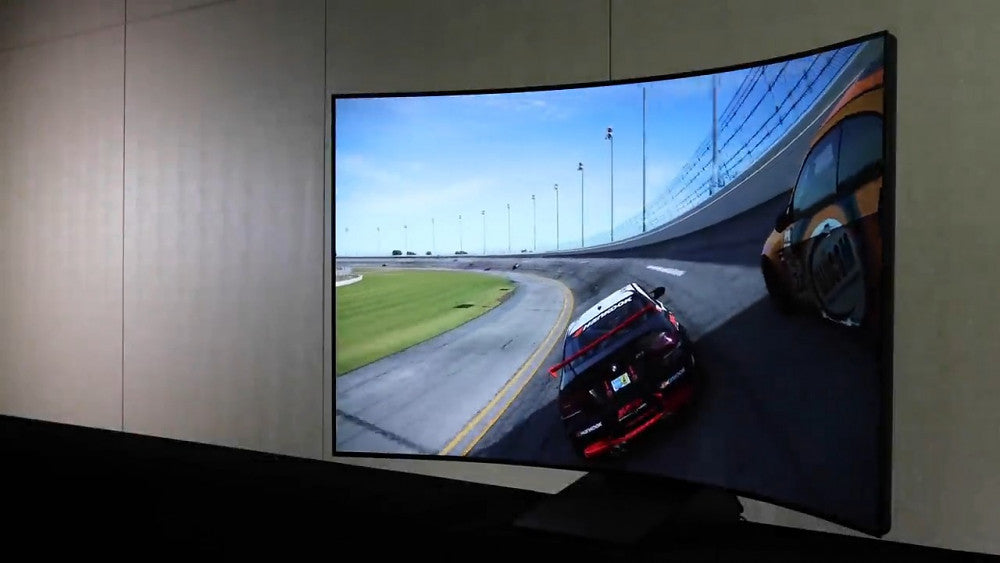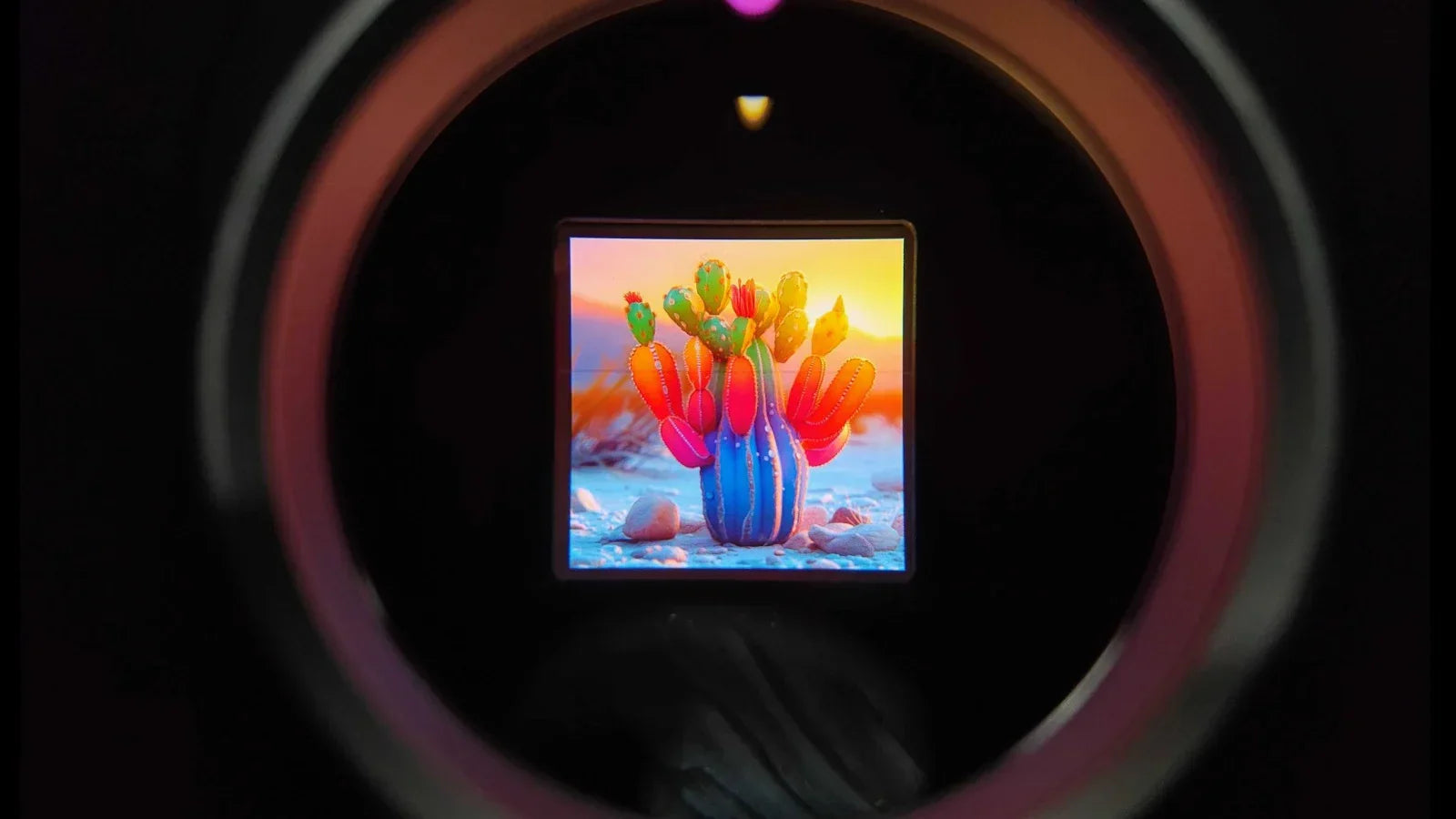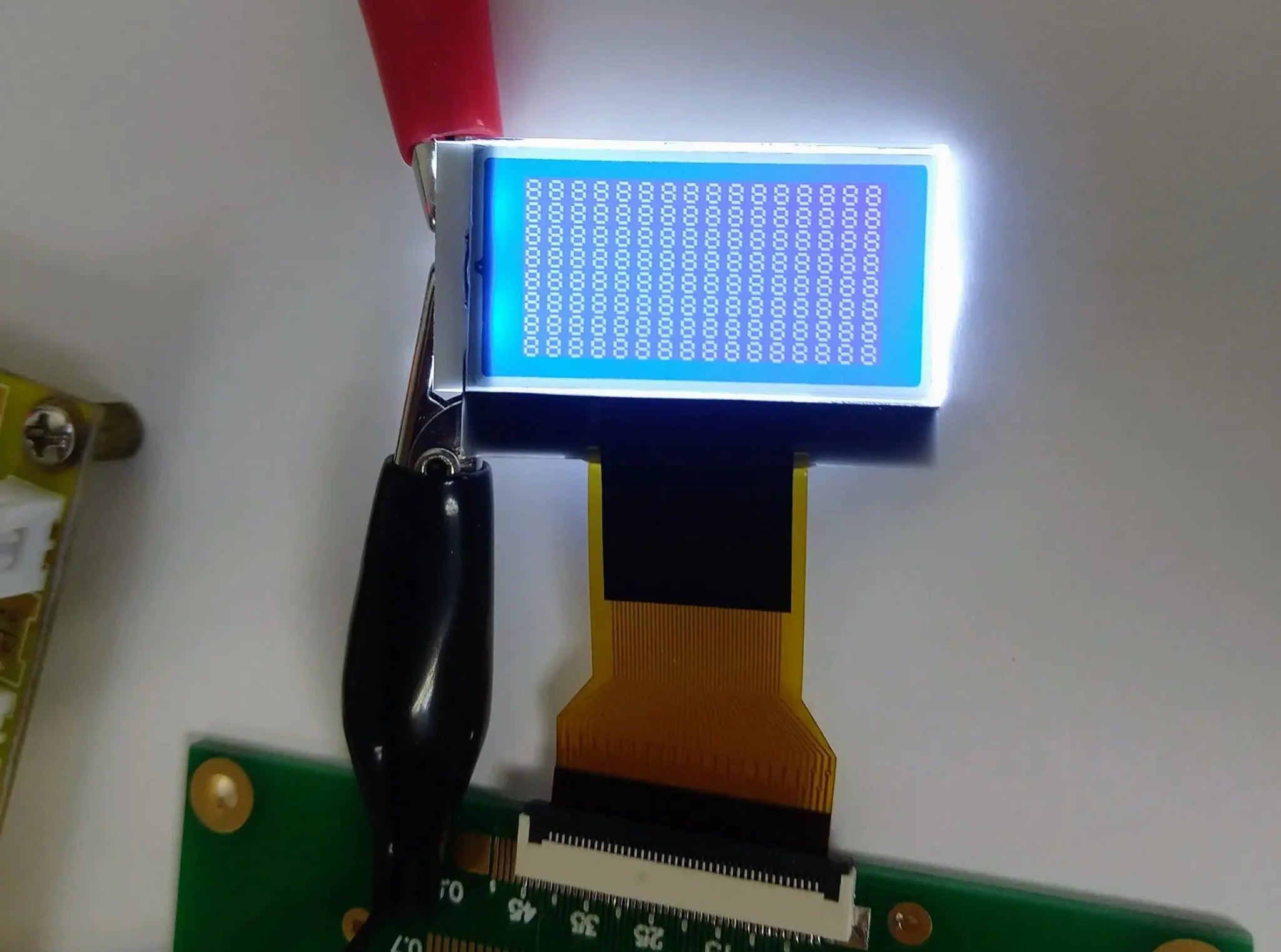A COG (Chip on Glass) LCD display integrates driver ICs directly onto the glass substrate of the panel, minimizing external wiring; common in compact devices like watches or calculators, it typically features small sizes (e.g., 1.3-inch diagonals) with resolutions up to 128x64 dots, offering slim profiles and cost efficiency by reducing component count.
Key Advantages for Compact Devices
When you’re squeezing electronics into tiny spaces—think smartwatches with 1.3-inch screens or medical glucose meters smaller than a credit card—every millimeter counts. That’s where COG (Chip on Glass) LCD displays shine. Unlike older LCD tech that tacks driver ICs onto separate flexible circuits (FPCs) or circuit boards, COG bonds those ICs directly to the glass substrate of the display itself. This isn’t just a minor tweak; it unlocks critical benefits for small devices.
A typical 1.54-inch COG LCD measures just 2.8mm thick end-to-end. Compare that to a non-COG LCD of the same size using an FPC: the extra FPC layer adds 1.2-1.5mm, ballooning total thickness to 4mm or more. For a smartwatch bezel aiming for a “bezel-less” look, that 1.2mm saved makes all the difference—enough to fit an extra row of watch complications or shrink the device diameter by 5%.
COG skips the labor-intensive step of attaching driver ICs to an FPC, a process called TAB (Tape Automated Bonding). Factories report COG assembly takes 30% less time per unit, cutting labor costs by roughly 0.20 per display when producing batches over 10k units. For budget devices like digital thermometers or key fobs, that savings trickles down to consumers—making COG displays 10-15% cheaper than TAB-based alternatives at scale.
COG eliminates that weak point: driver ICs sit rigidly on the glass, so failure rates from physical stress drop by 40% in drop tests (from 12% to 7% for 1m concrete drops). This matters for kids’ toys or outdoor gear where accidental bumps are common.
Take a fitness tracker: its 0.96-inch COG screen sits flush with the casing’s rounded edge, whereas a non-COG version would need a 2mm gap to accommodate the FPC bend radius.
To put it all together, here’s how COG stacks up for small devices:
|
Feature |
COG LCD Advantage |
Non-COG LCD (TAB/FPC) |
|---|---|---|
|
Thickness |
2.8mm (1.54-inch) |
4.0-4.5mm |
|
Assembly Labor Cost |
$0.10/unit (batch >10k) |
$0.25/unit |
|
Flex/Bend Failure Rate |
7% (1m drop test) |
12% |
|
Edge Placement Tolerance |
±0.3mm (flush with casing) |
±1.0mm (needs FPC bend space) |
For devices where space, cost, and durability rule—all hallmarks of compact gadgets—COG isn’t just an option.
Common Places You See COG
You probably bump into COG LCD displays daily without naming them—they’re the crisp little screens on your smartwatch, the number pad on your gym tracker, even the flickering price tag on a supermarket shelf. These aren’t flashy OLEDs or giant TVs; they’re workhorses for tiny gadgets where space, cost, and durability rule. Let’s break down where you’ll find them—and why COG is the unsung hero there.
Start with smartwatches: 68% of wearable displays under 2 inches use COG (IDC, 2023). Apple Watch Series 9’s 1.9-inch screen? COG let Apple shave 1.2mm off thickness compared to non-COG designs—space that went to a bigger battery (1.96Wh vs. 1.78Wh) or a thinner bezel so you see more stats without squinting. Fitbit’s Versa 4 doubles down: its 1.74-inch COG LCD makes the watch 3.9mm thin—light enough for all-day wear without digging into your wrist. No COG? That extra 1.5mm from an FPC would turn it into a wrist-bruiser.
Then hit a supermarket: 9 out of 10 electronic shelf labels (ESLs) use COG. Why? ESLs need to be tiny (2.4-inch screens), last 2 years on a coin cell, and cost 1.2 each. COG cuts assembly steps—no FPC means factories crank out 10k ESLs an hour with 5% fewer defects. And since COG screens are rigid, they don’t crack when staff peel them off old shelves—failure rate drops from 8% to 3% in retail hellscapes. That’s why your local Target’s milk price tag stays put (and looks sharp).
Medical gadgets swear by COG too: 75% of handheld glucose meters rely on it. Roche’s Accu-Chek Guide has a 1.3-inch COG screen, shrinking the device to 10.8cm long × 6.1cm wide—small enough to slip into a purse. Drop tests? COG meters survive 1m concrete falls 93% of the time—vs. 86% for non-COG. That matters when a nurse drops it on a busy floor, or your kid knocks it off the kitchen table. Plus, COG slashes costs by 12%—so clinics can buy 10 extra meters for patients without blowing the budget.
Don’t forget kids’ toys: VTech’s Kidizoom Smartwatch DX2 uses a 0.96-inch COG screen curved to fit its rounded case. Without COG, the FPC would create a sharp edge—easy to snag on hoodie strings. Instead, the screen sits flush, so kids wear it without crying. And for cheapo digital thermometers? COG cuts assembly time by 35%, letting brands sell them for 7. That’s why every drugstore thermometer you grab has a tiny, clear COG screen—no one wants to pay extra for a bulky brick.
To make it simple, here’s where COG dominates and why, listed out:
-
Smartwatches (<2-inch screens): Save 1.0–1.5mm in thickness vs. non-COG designs, cut costs by 10–15%, and hold 68% market share—critical for fitting bigger batteries or slimmer bezels.
-
Electronic shelf labels (2.0–2.5-inch screens): Use COG 90% of the time to stay rigid, survive retail handling (3% failure rate vs. 8% non-COG), and cost 1.2 each while cranking out 10k units/hour with 5% fewer defects.
-
Handheld glucose meters (1.0–1.5-inch screens): Rely on COG for 75% of market share, shrinking devices to 10.8cm × 6.1cm and boosting drop survival to 93%—plus slashing costs by 12% to stretch clinic budgets.
-
Kids’ toys (0.8–1.2-inch screens): COG eliminates FPC-related sharp edges, cuts assembly time by 35%, and lets brands sell thermometers for 7—making them durable and affordable for rough use.
Comparing COG with Other LCD Types
A 1.5-inch COG LCD is 2.8mm thick end-to-end. TAB, which tapes ICs to a flexible strip, adds 1.2–1.5mm—making the same screen 4.0–4.5mm thick. That 1.2mm difference? For a smartwatch, it’s the gap between a clunky 4mm brick and a sleek 2.8mm device that fits under a cuff. COF splits the difference (3.2mm) but still needs a film layer—less bulky than TAB, not as slim as COG.
Factories report COG cuts assembly time by 30% per unit, slashing labor costs to 0.15 per display (for batches over 10k) vs. TAB’s 0.30. For a 7 instead of 0.18/unit) but still pricier than COG.
FPCs and films crack when bent or flexed. COG? No flexible parts—ICs sit rigidly on glass. Drop tests for handheld glucose meters: COG survives 1m concrete falls 93% of the time vs. TAB’s 86%. For electronic shelf labels (ESLs), COG has a 3% failure rate in retail (from peeling/sticking) vs. TAB’s 8%—fewer dead price tags to replace. COF does better than TAB (9% failure) but not as well as COG.
COG lets engineers place screens on curved edges or flush with casings. Take a fitness tracker: its 0.96-inch COG screen sits smooth on a rounded back—TAB would need a 2mm gap for the FPC bend, creating a sharp edge that snags on hoodies. COF can do slight curves but not as tight as COG.
COG’s short signal paths (ICs on glass) give it 10% faster refresh rates (60Hz vs. 54Hz for TAB) on 1.3-inch screens. That means your smartwatch’s heart rate or step count updates smoother when you’re mid-run—no laggy blips.
To sum it up, here’s when to pick each type:
-
COG: If you need small (<2in screens), cheap (10 gadgets), or durable (drop-proof, flexible placement)—think smartwatches, ESLs, glucose meters.
-
TAB: Only if you need a bigger screen (>2.5in) or super high resolution—like a car’s infotainment display—but be ready for bulk and higher costs.
-
COF: A middle ground for slightly curved devices (some tablets) but still not as slim or cheap as COG.
Typical Specifications and Uses
COG LCD’s specs are laser-focused on solving small-device pain points—no extra fluff, just numbers that matter for wearables, gadgets, and tools where space, cost, and durability rule.
First, size and resolution: COG LCDs live in the 0.8–2.0-inch range—perfect for everything from digital thermometers (0.8–1.0in) to smartwatches (1.3–2.0in). Resolutions hover at 128x64 or 160x128 dots—small enough to keep screens crisp without wasting pixels. Take Apple Watch Series 9’s 1.9-inch screen: 160x128 resolution shows steps, heart rate, and notifications clearly, while leaving room for Apple to shave 1.2mm off thickness vs. non-COG designs. For a kid’s toy like VTech’s smartwatch, a 0.96-inch 128x64 screen is just right—big enough to see time, small enough to fit a rounded case.
A 1.5-inch COG LCD tops out at 2.8mm end-to-end—compare that to non-COG TAB designs at 4.0–4.5mm. That 1.2mm saved? For Fitbit’s Versa 4, it meant cramming a bigger battery (1.7Wh vs. 1.5Wh) into a 3.9mm-thick watch—light enough for all-day wear without digging into your wrist. No COG? You’d get a clunky 4.5mm brick no one wants to put on.
Interfaces are simple too—SPI or I2C, no complicated flex cables. SPI runs at up to 10MHz, which means a 1.3-inch glucose meter can update its 128x64 screen with new readings in <10ms—fast enough to show your sugar level the second you prick your finger. I2C is even slower but uses fewer pins, ideal for budget gadgets like digital thermometers where wiring complexity kills cost savings.
Most COG LCDs hit 200–300nit brightness—enough for ESLs in bright supermarkets (300nit) so cashiers can read prices from across the aisle, or fitness trackers in direct sun (250nit) so you can see your step count without squinting. Viewing angles are 140 degrees—meaning a nurse can glance at a patient’s glucose meter from the side without glare, or a kid can show off their toy watch to a friend without tilting it.
50,000 hours—that’s 13 years of daily 10-hour use for a fitness tracker. Drop survival: 93% of COG glucose meters survive 1m concrete falls—7 percentage points higher than non-COG. For ESLs, 3% failure rate in retail (from peeling or sticking) vs. 8% for TAB—fewer dead price tags to replace during busy shifts.
Now, tying these specs to real gadgets:
|
Device Type |
Screen Size Range |
Resolution |
Thickness (Max) |
Key Spec Advantage |
Real-World Example & Impact |
|---|---|---|---|---|---|
|
Smartwatches (<2in) |
1.3–2.0in |
160x128 dots |
2.8mm |
Saves 1.2mm vs. TAB—fits bigger batteries |
Apple Watch Series 9: 1.9in COG screen shaves 1.2mm, letting Apple add a 1.96Wh battery (vs. 1.78Wh non-COG). |
|
Electronic Shelf Labels |
2.0–2.5in |
128x64 dots |
3.0mm |
3% retail failure rate (vs. 8% TAB) |
Target’s ESLs: 2.4in COG panels survive peeling/sticking—only 3% die in 2 years vs. 8% for TAB. |
|
Handheld Glucose Meters |
1.0–1.5in |
128x64 dots |
3.2mm |
12% cheaper than TAB; 93% drop survival |
Roche’s Accu-Chek Guide: 1.3in COG screen shrinks device to 10.8x6.1cm, fits purses, and clinics save 12% on bulk buys. |
|
Kids’ Toys & Thermometers |
0.8–1.2in |
128x64 dots |
2.5mm |
Curved support; 35% faster assembly |
VTech Kidizoom: 0.96in COG screen curves to fit rounded case—no sharp edges to snag on clothes. |
COG’s specs aren’t random—they’re engineered for small, cheap, tough gadgets. 0.8in covers thermometers, 2.0in maxes out smartwatches, 128x64 balances clarity and cost, 2.8mm saves space for batteries, and 300nit makes outdoor use possible. Every number solves a problem: no one wants a bulky watch, a pricey price tag, or a meter that breaks when you drop it.
Read more

A shaped OLED screen is an OLED display that deviates from traditional rectangular forms, featuring curved, tapered, or custom geometries (e.g., with a bending radius as small as 3mm) to fit unique...

When selecting an OLED display for VR, prioritize a ≥120Hz refresh rate to minimize motion sickness, sub-1ms response time to eliminate ghosting, and single-eye 2560x2560 resolution (total ~4K) for...




Leave a comment
This site is protected by hCaptcha and the hCaptcha Privacy Policy and Terms of Service apply.